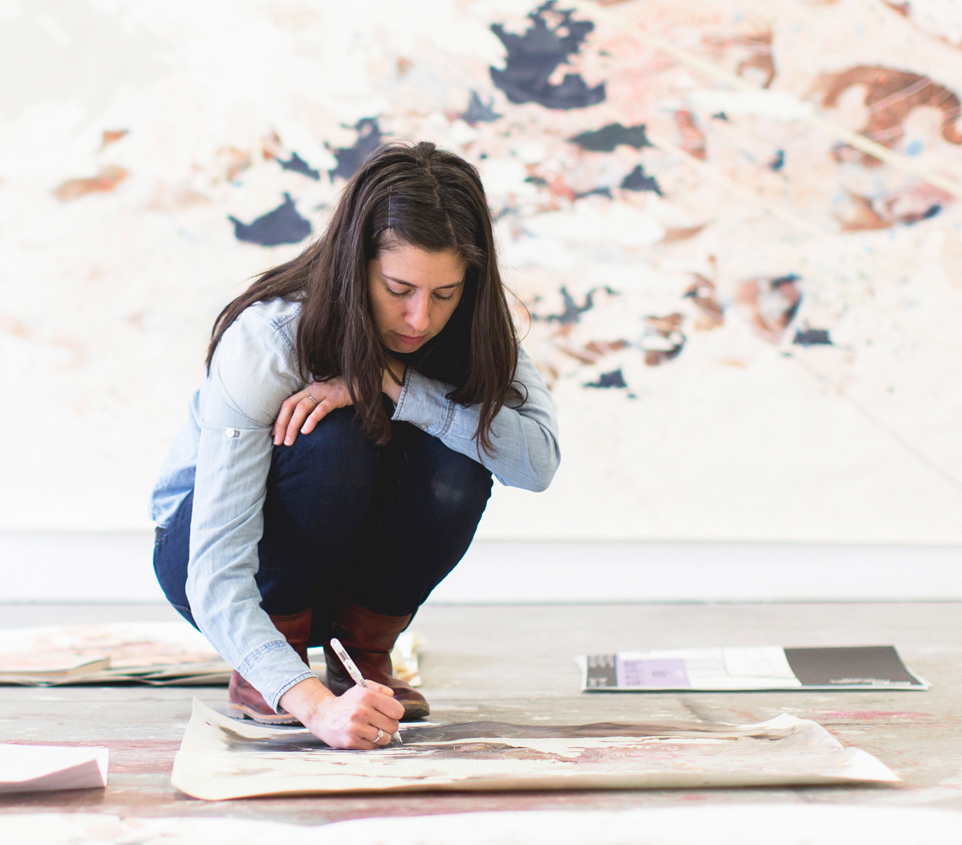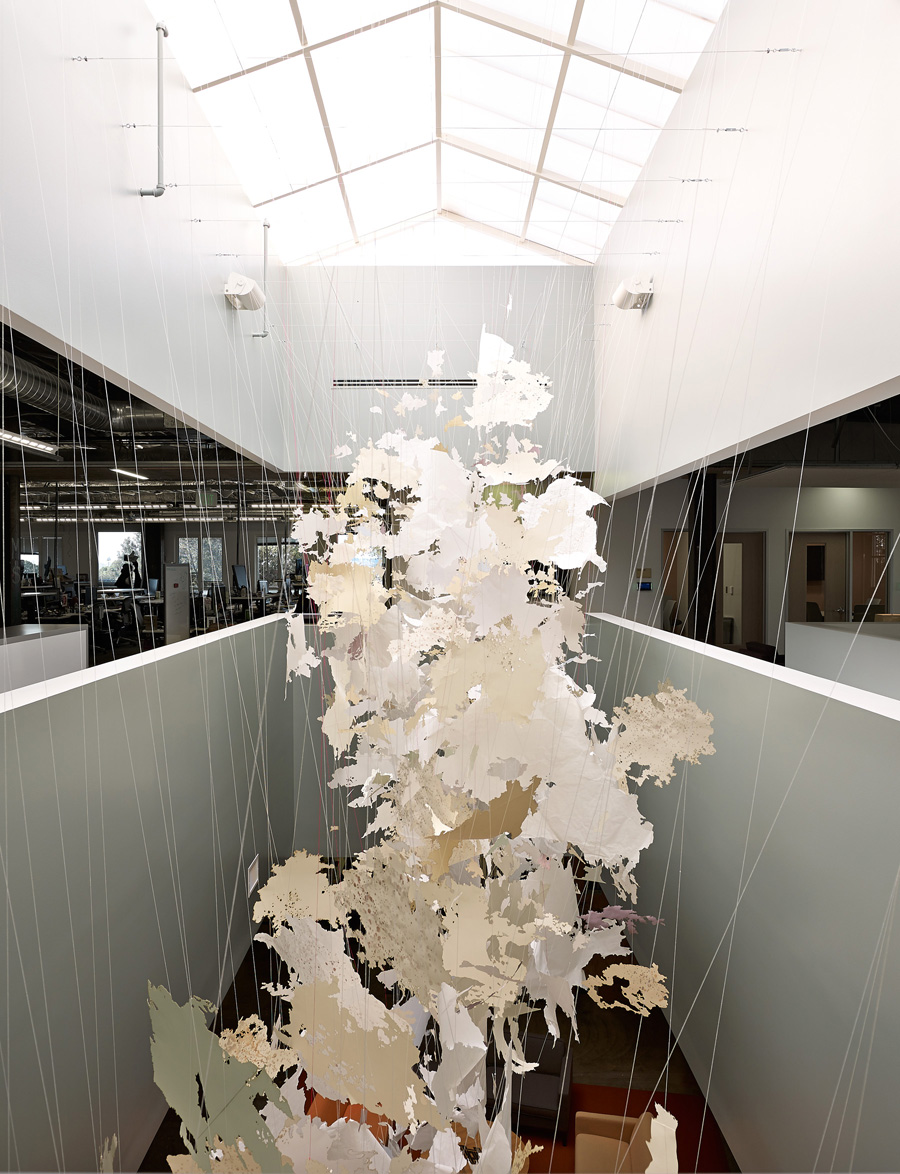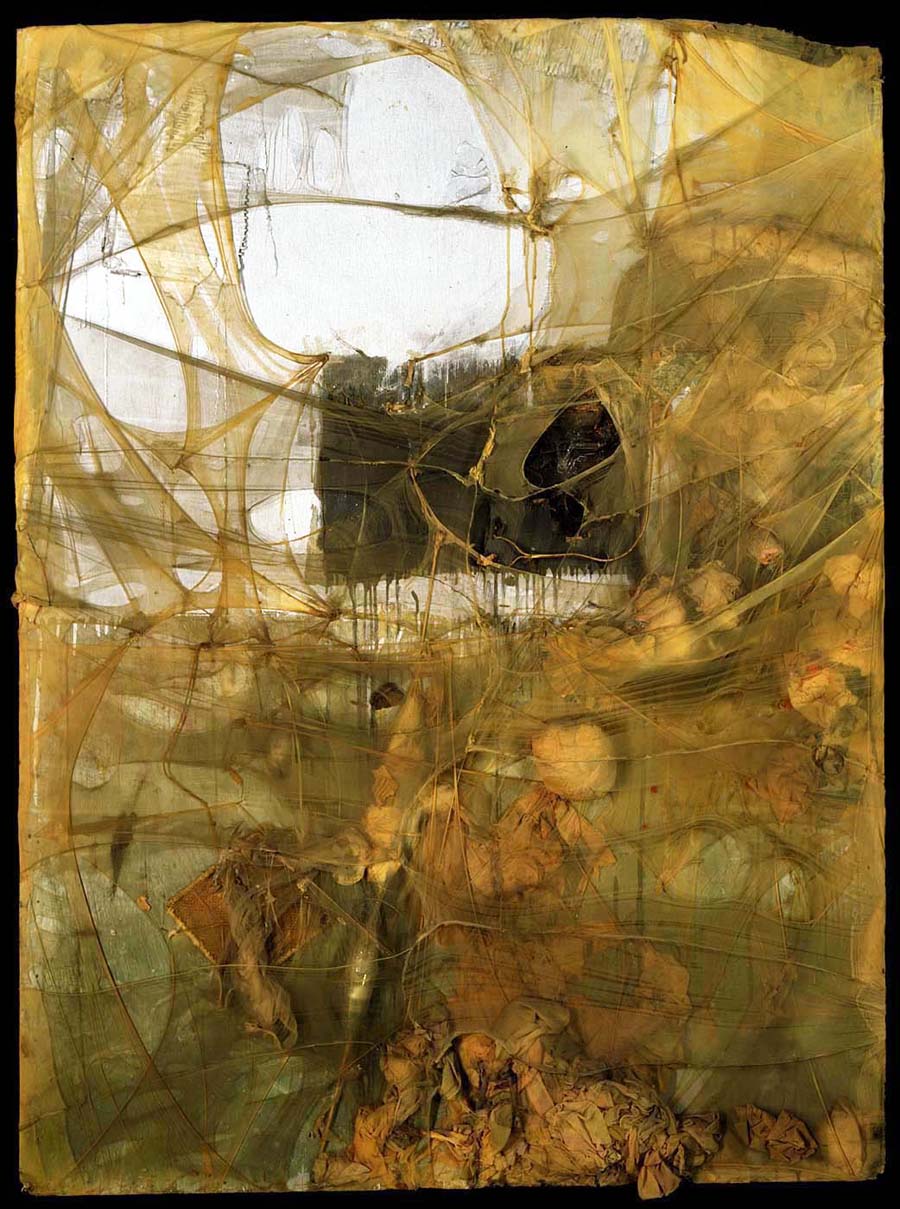Collage: the Ultimate Remix - Page 6
 |
|
|
 |
|
|
 |
|
|
 |
 |
|
|
Rosch, who was born in 1976, shows that California's collage tradition continues. Lynn Hershman Leeson says collage in California is different than back East.
"It's a deeper collage aesthetic in California. I don't see it so much in New York. It's more digital crossover in New York. Here it is more made by hand," she says.
The two techniques, she says, are "totally different. One is more tactile."
It's that tactility, the feeling of the paper and other objects, that for many artists and fans of the medium is its greatest appeal.
It was certainly that way for Kurt Schwitters, who spent hours combing through old debris to find just the right colors and textures of papers to attach to his works.
And it is also that way for San Francisco collagist Val Britton, whose work hangs in the San Francisco Airport and in the lobby of Facebook.
Using recycled materials in her work, she writes, "has informed my work in unexpected ways, imbuing it with unknown histories."
Although most of her works involve collage as well as painting and sculptural elements, she doesn't bring in found imagery. "What I do is more create my own collage elements," she says, playing up varied textures and colors.
Britton's images, map-like landscapes that relate both to actual places and to places inside the mind, are layered constructions. She loves arranging and re-arranging the pieces of hand-cut paper until the composition feels right.
She says viewers appreciate the handmade quality of her work. "It's about how we feel at this moment in time, the Internet Age. We are reacting against the hyper digital."
Rosch too loves working with real materials. "For me," he says, "the actual torn book page is important. It's two-dimensional, but it becomes an object when you remove it from the book and place it in the frame. I don't clean up the edge of the torn paper. It's not digital. It's important that the book page be torn out."
Leeson—she's described her own work as "random, fragmented, schizoid, nonlinear, disruptive, anti-narrative, and interactive," everything you might want in collage—has focused for much of her career on threats to the human body, and to humanity itself as we move through an ever-changing and often perilous world.
The results in some of her collages can be both hilarious and disquieting—a photomontage of a stylish woman ready to be plugged into a power outlet, her 'Breathing Machine' assemblages featuring a woman's face combined with textiles and butterflies.
One of her themes has long been how humans could be invaded by machines, becoming cyborgs—part human, part machine.
What with human brains being frozen waiting for future implantation in robot bodies, with nanocomputers being designed as brain implants—heck, with fake knees, Google Glasses, and self-driving cars—maybe the machines are already in charge. Some people think this is a good thing.
"If humans are merging with machines," Lynn Hershman Leeson says, "it's a kind of a collage. Cyborgs are collages. Robots are collages."
Collage art and photography: courtesy Jeffery Cross, Colin Conces, Lynn Hershman Leeson, Eugenia Loli, Val Britton, Jose Lledo, Gallery Paule Anglim, Estate of Horst H. Gottschalk, Jess Collins Trust, Albright-Knox Art Gallery, Robert Rauschenberg Foundation




